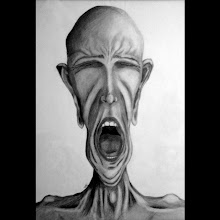So how does an artist price one's art? Should it be priced differently than a one-of-a-kind component-assembled piece of jewelry that was designed by an artist? Obviously, a print is less expensive than an original. So where do you start with pricing? Well, you obviously need to make back at least what the materials cost you to make it. Right? And, there should be some compensation for the labor as well. But, does it stop there? The artist had to come up with a design or an idea. Shouldn't they also be compensated for that? Does a one-of-a-kind jewelry design also count as an original? I think so. If there will never be another pair of earrings like that, then, yeah, it's an original. Then, there's the actual execution of that design or idea, the creative process of sculpting or drawing and the quality of craftmanship. That should certainly be accounted for, too, shouldn't it? Then, there's marketing costs, advertising, listing fees, etc. Then comes packaging, like pretty boxes and ribbons and shipping materials, not to mention the actual cost of shipping.
I've recently been re-evaluating my prices for my silver and sculpted art jewelry. I didn't realize how many pieces actually go into these designs. When I thought of cost of materials, I really just concentrated on the focal pieces of each item, for example, larger Swarovski crystal drops. But once I started analyzing each individual component of my jewelry designs, I realized there could be up to 32 sterling silver jumprings in a pair of earrings or 25 inches of sterling silver chain for a necklace, which really adds up, but I wasn't accounting for it. Just seeing the total cost of the materials, not even including labor, design, packaging and all the other things mentioned above, was a true eye-opener for me as to whether or not I was making any profit from my labors of love.
So I started thinking of the "value" of art. What kind of value can you place on the creation of something unique and individual just for the sake of it being one of a kind? Do people care if the jewelry they wear or the art they hang on their wall is one of a kind? I would hope that many consumers would want something unique, something that's not mass produced. Something different. Should value be placed on the fact that an item is individually crafted with love and care and not by a machine that doesn't give a rat's ass what the finished piece looks like? What value can you place on the personal nature of buying a piece of art from somebody that has created it with their own hands. How about being able to speak directly to that person if necessary? You can't talk to the factory worker that put together that pair of earrings or the necklace you got from Claire's or Macy's or any other chain store. There has to be value in excellent customer service.
But what IS that value? So far, I've been doing it by gut. I think of the time I invested and all the other happy stuff and I think, "What would I be content with accepting for this piece? What price would be fair to my client? Would I pay that much for this?" Above all, I want to be fair, but, of course, I want to be compensated for my art. So WHAT IS THE VALUE???? What is the actual number that you can plug into these little segregated categories of creation? I'm not sure there's any set algorithm or formula you can use to figure it out. I think it's got to feel right for the artist as an individual. But each area needs to be thought about and taken into consideration. Some people may agree with you and be willing to pay it and some may not. Just be happy with the price and be fair.
So after evaluating my cost of materials, I brought some items' prices down and others I brought up. In some cases, I was only making 98 cents after only minusing material costs! Yikes. but I feel more comfortable with my prices after the process, though, it was long and drawn out. If I would have kept track of all this stuff from the beginning, it would have been less tedious. But now I've got a system implemented and it should be easier from here on out. I'm in the process of creating a database app that allows me to track all this stuff.
So remember, my fellow artists, to take these things into account when you're pricing your art and/or designs. And don't sell yourselves short. Really evaluate the cost of materials. You might be shocked at how the little things add up.
I'd love to get any feedback or comments regarding this. Let me know what you think.



